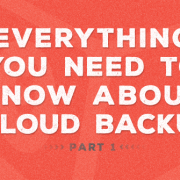Bush fires, floods, severe storms, earthquakes, landslides—Australia experiences them all. Theses disasters are so frequent that they have become part of regular life for many Australian citizens. With this level of instability, business continuity and disaster planning is a must!
Digital disasters caused by these natural events cost Australian businesses millions of dollars each year in equipment, property and most importantly, data loss. According to the Institute for Business & Home Safety in Tampa, Florida, 40% of businesses that lose a significant amount of data close within 5 years. This can be avoided.
To be better prepared, disaster recovery planners use preventive, exploratory and reactive plans to reduce or eliminate threats to business infrastructure.
Preventive planning puts in place fault tolerance systems to automatically handle the most rudimentary types of errors so that the system will be able to handle the error and continue to operate as normal.
Exploratory planning tests the system in order to discover more in depth problems before they occur so that a preventative plan can be put into place.
Executing on a reactive plan is what all IT staff work hard to avoid because it’s an intense exercise put into place to restore a system when disaster strikes. Testing reactive plans early and often will ensure a plan’s success in a true disaster situation.
Remote offsite backup providers, such as Corporate Backup of Australia, use ROBOBAK as an integral part of a business’ disaster recovery plan by seamlessly and securely storing data offsite, out of harm’s way. These machines are protected if disaster strikes. Are you?




Leave a Reply
Want to join the discussion?Feel free to contribute!